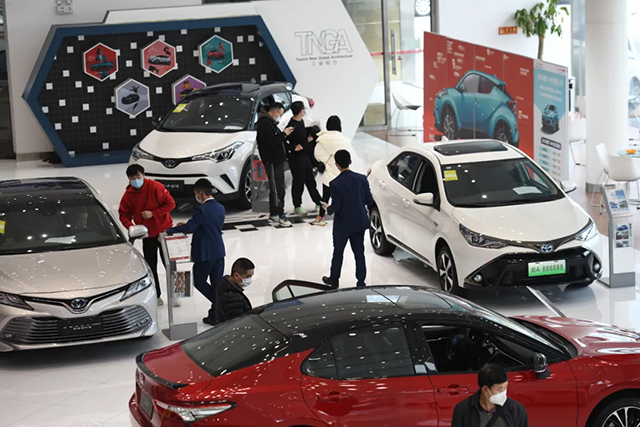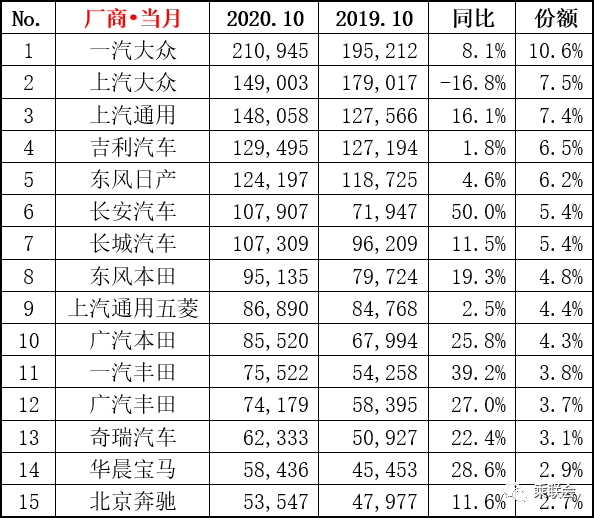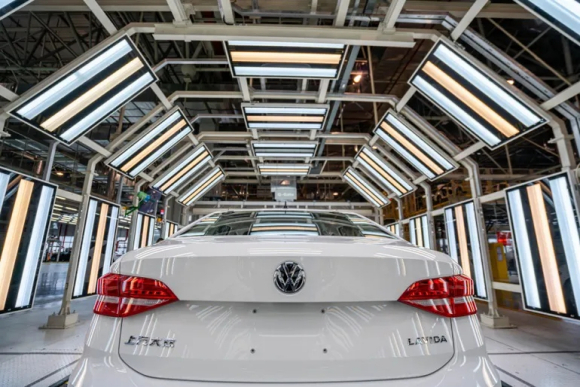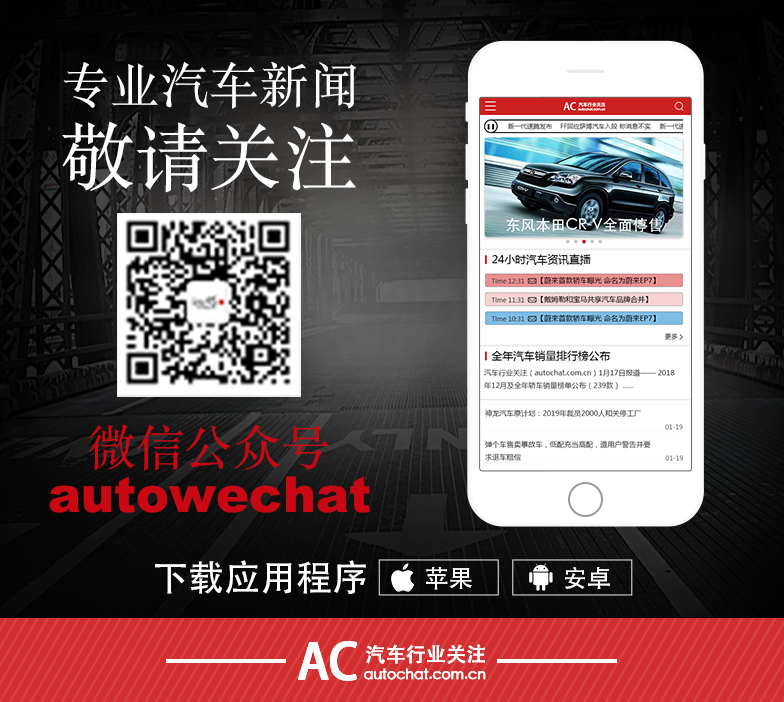In addition to Weibo, there is also WeChat
Please pay attention

WeChat public account
AutoBeta


2024-11-22 Update From: AutoBeta autobeta NAV: AutoBeta > News >
Share
AutoBeta(AutoBeta.net)11/11 Report--
Under the stock competition, the concentration of the market is increasing, and gradually tilted to the head brand, consumers also pay more and more attention to brand image, product reputation and so on, automobile consumption also tends to be more rational. In this environment, the market performance of Japanese brands seems to be more prominent, even surpassing German brands.
Retail sales in the domestic passenger car market reached 1.992 million in October, up 8 per cent from a year earlier, according to the latest report released by the Federation of passengers, with a high growth rate for four consecutive months, with retail sales of mainstream joint venture brands up 6 per cent year-on-year in October.
In the joint venture brand series, the market share of Japanese brands is higher than that of German brands. The market share of Japanese brands reached 23.9 per cent in October, higher than that of German brands, which was 23.7 per cent, the federation said.
Industry insiders believe that the core feature of the rise of the Japanese system is' releasing water to raise fish', so that more enterprises can develop better. At the same time, 'Liangda' has been at the forefront of technology in the hybrid field, which also reflects the relatively solid product line of Japanese brands as a whole.
On the other hand, Toyota and Honda have achieved the coordinated development of the North-South joint venture, and the two-car launch strategy has achieved results, and will further increase the launch and coordination efforts in the follow-up.

Japanese mainstream joint venture car companies rose collectively. Dongfeng Nissan sold 124200 vehicles in October, up 4.6 per cent from a year earlier and accounting for 6.2 per cent of the market, according to statistics from the Federation of passengers. The two Honda joint ventures also saw double-digit growth, thanks to the new Feido, the incremental sales of Haoying's new cars, and the continued strength of Accord, Civic and C-RV models. Dongfeng Honda sold 95000 vehicles in October, up 19.3 per cent from a year earlier, while Guangzhou Auto Honda sold 85500 vehicles in October, up 25.8 per cent from a year earlier.
With the introduction of the new architecture platform and the launch of new cars, Toyota has also ushered in a new explosive period in China. In October, FAW Toyota sold 75500 vehicles, up 39.2% from a year earlier, while Guangzhou Auto Toyota sold 74200 vehicles, up 27% from a year earlier.
Toyota has a tendency to expand in the introduction of new cars, and at the same time, it has also stepped up its efforts to launch dual cars. In the future, Toyota's product lineup in China will form more market segments, including the new Hanlanda, the new generation of Sienna (Senna) and the new generation of Harrier (Hailia) will be put into production in Guangzhou Auto Toyota and FAW Toyota respectively. At the same time, models developed based on the local market will also be introduced to the market. GAC Toyota's new TNGA car is confirmed to be named "Ling Shang". The new car is located between Lei Ling and Camry, while FAW Toyota also has corresponding product launches.

Different from the collective rise of the mainstream Japanese joint venture brands, SAIC Volkswagen in the German brand formation has been dragged down, which is also an important reason why the market share of German brands has been overtaken by Japanese brands.
FAW-Volkswagen and German luxury brands play steadily. FAW-Volkswagen continues to take the lead, firmly occupying the first place among passenger car companies, with sales of 210000 vehicles in October, an increase of 8.1% over the same period last year, and its market share reached 10.6%. FAW-Volkswagen has Audi, Volkswagen, Jetta three major brands, to achieve in their own market segments.
Brilliance BMW and Beijing Mercedes-Benz also had eye-catching market performance, with brilliance BMW selling 58400 vehicles in October, up 28.6 per cent from a year earlier, while Beijing Mercedes-Benz sold 53500 vehicles in October, up 11.6 per cent from a year earlier. With the continued prosperity of the luxury market, BBA, as a first-tier brand, has also achieved high growth.

The difference is that SAIC-Volkswagen sales continue to decline. In October, SAIC-Volkswagen sold 149000 vehicles, down 16.8% from a year earlier, making it the only car company to decline in the top 15 of passenger car companies, with a double-digit decline. At present, SAIC-Volkswagen's sales have declined for 10 months in a row and have failed to usher in monthly growth since 2020. The loss of SAIC-Volkswagen is also an important reason why the overall market share of German brands is lower than that of Japanese brands.
The product power of SAIC-Volkswagen's main selling models has declined, and the competitiveness of new products is insufficient. The Passat is an obvious model of SAIC-Volkswagen, but the collision door incident has left a shadow that is difficult to remove, even though SAIC-Volkswagen tries to catch up by introducing new models and increasing terminal discounts, but the "collapse" effect of product reputation and image continues. Another popular model, Volkswagen Tuguan, also fell fast, with its market position declining due to the continued crackdown by the Japanese joint venture SUV, with sales of 17000 vehicles in October, down 15.1% from a year earlier, compared with a 27.9% drop in the previous month.
On the other hand, the lack of competitiveness of SAIC-Volkswagen new products and the unsalable of some products have also led to a large decline in sales, including the Polo Plus, the new Toujia new cars can not continue to go, and the newly listed MPV sales are also relatively low. The embarrassing market performance of SAIC Skoda brand has further aggravated the enterprise sales crisis.
German brands are expected to increase sales through "electrification". At present, FAW-Volkswagen and SAIC-Volkswagen have introduced MEB pure electric platform, and their first models, ID.4 Corzz and ID.4 X, respectively, will go on sale early next year, with official prices all within 250000 yuan. According to Volkswagen's plan, Volkswagen will launch eight ID models in China by 2023 and sell 1.5 million electric vehicles annually by 2025.
On the whole, the head of Japanese car companies continue to grow at a high level, in sharp contrast to the continuous decline of SAIC-Volkswagen. SAIC Volkswagen believes that the dual brands are making product restructuring this year, so the decline will be greater than that of the overall market. After a good adjustment this year, they will be able to return to the normal level next year.
Welcome to subscribe to the WeChat public account "Automotive Industry Focus" to get the first-hand insider information on the automotive industry and talk about things in the automotive circle. Welcome to break the news! WeChat ID autoWechat
Views: 0
*The comments in the above article only represent the author's personal views and do not represent the views and positions of this website. If you have more insights, please feel free to contribute and share.









Volvo: sell at least 600000 trams in 2025


© 2024 AutoBeta.Net Tiger Media Company. All rights reserved.